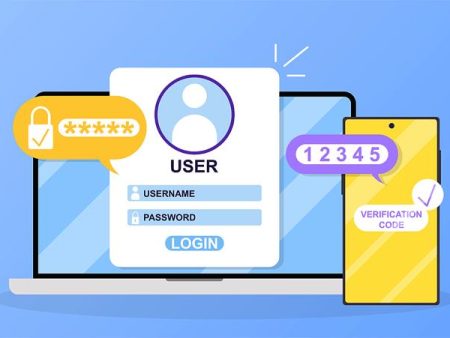
Understanding Racing Terminology
Grasping the complexities of racing can be daunting. To help newcomers, this guide breaks down the essential terms and jargon used in the sport. Weight Allowance is given to riders with less experience—such as apprentices and amateurs—to level the playing field against more seasoned jockeys, typically ranging from 3lb to 7lb, decreasing as they gain experience by winning more races.
Types of Racing Surfaces and Race Participants
All-Weather (AWT) refers to a synthetic track surface used for racing. An Also-ran describes a horse that finishes out of the money, far back in the field. Amateur jockeys, noted by titles like Mr. or Mrs. on racecards, ride without payment, distinguishing them from professional riders.
Betting and Positioning Terms
Antepost Betting allows bets to be placed well in advance of major races like the Grand National, often at better odds due to the uncertainty of the horse’s participation. The term At the post indicates that all horses have reached the starting point of the race.
Equipment and Racing Conditions
A Bridle is crucial gear that helps control a horse, and a horse that won on the bridle did so effortlessly, without being pushed to its limits. The unfortunate term Broke down refers to a horse that has been injured during a race. A Broodmare is a female horse used for breeding rather than racing, typically retired from competition.
Race Types and Interferences
Bumpers are flat races under Jump Rules, serving as a training ground for young horses before they progress to hurdles or fences. The act of Bumping involves a horse colliding with another, which can lead to a Stewards’ Enquiry especially if it affects the race outcome. Blinkers are a type of headgear used to focus a horse by limiting its peripheral vision, indicated by a ‘b’ next to the horse’s name on a racecard.
Race Strategy and Track Roles
Being Boxed in happens when a horse is trapped by others and unable to advance. In Conditions races, horses carry additional weight based on various factors like age and past wins. Connections refer to the horse’s affiliated individuals, including its trainer and owner. A Course specialist is a horse known for performing well at a specific track.
Classifications and Measurements
Chasers are horses that compete in steeplechases. A Clerk of the Course oversees the racecourse management, including track preparation. Disqualification occurs when a horse is penalized for rule infringements post-race, potentially altering the final results. Distance measures the length by which a horse wins or loses, with significant leads referred to as winning “by a distance.”
Starting Positions and Race History
The Draw determines a horse’s starting stall in flat races, which are conducted from specific stalls. A Drop in class or trip indicates a horse competing in a lower level race or over a shorter distance than previously.
Performance Indicators and Betting Favorites
Form reflects a horse’s racing history, displayed next to its name on a racecard and read from newest to oldest. A Front-runner is a horse that leads or stays near the lead throughout a race. Furlong is a traditional racing distance measurement, equivalent to 220 yards. A horse described as Fancied is expected to perform well, potentially winning or placing. The Favourite is the horse with the lowest odds in a race, and the Field refers to all competing horses, with special betting terms applied to exclude the favorite. Filly denotes a female horse aged four years or younger, emphasizing its youth in racing terms.
Guide to Advanced Racing Terms: G to J
Elite Racing Categories
Group / Graded Races represent the pinnacle of the racing world. Group races occur on the flat, while Graded races generally involve jumps. The most prestigious are Group 1 or Grade 1 races, which include top-tier events like Britain’s Classic Flat races or the Cheltenham Gold Cup over jumps.
Gait and Training Terminology
The term Gallop refers to a horse’s fastest gait, the primary speed during races. Gallops also denote the training areas where racehorses are exercised. A Gelding is a castrated male horse, often seen in jump racing but restricted from certain elite flat races like the Derby, aimed at assessing breeding prospects.
Race Distance and Track Condition
To Get the trip means a horse successfully manages the race’s distance. Going describes the race track’s surface condition, crucial for assessing how different horses will perform, ranging from ‘heavy’ to ‘firm’.
Performance Categories
Group 1 (Flat) / Grade 1 (jumps) races are at the top of the racing hierarchy, hosting the most significant events like Royal Ascot’s Gold Cup and the Cheltenham Gold Cup.
Handicap Racing and Regulations
A Handicap race levels the playing field by assigning different weights to horses based on their ratings, ideally ending in a dead-heat. The Handicap mark / Rating is determined after a horse has run several races, influencing its weight in future handicaps. A Handicapper is an official who assigns these ratings and weights, working for the British Horseracing Authority.
Course Specifics and Hurdling
The Home straight is the final stretch of track leading to the finish line. A Hurdler competes over hurdles, which are less challenging than fences. Hurdles are the lower obstacles used in such races, often serving as a preliminary step before tackling higher fences.
In-Race Dynamics and Juvenile Classes
In running refers to actions occurring during a race, with In-running betting allowing wagers to be placed as the race progresses, with odds that adjust dynamically. A Juvenile is a two-year-old horse, with all horses aging uniformly on January 1 regardless of their actual birthdate. Juvenile hurdlers are young horses, specifically those turning four, who begin their hurdling careers in that season.
Racing Terms Explained: From Lay to On the Nose
Betting Terminology
To Lay a bet means to bet against a particular outcome; for instance, a bookmaker might say, “I’ll lay 6-4 this favourite,” indicating they are betting on the favourite to lose. A Layer is another term for a bookmaker, someone who takes bets against outcomes.
Track Orientation and Measurement
A Left-handed track is one where the course runs anti-clockwise. Length is a common racing measurement indicating the distance from one horse to another at the finish line or the length of a horse from nose to tail.
Race Classes
A Listed Race is a high-quality race just below Group or Graded races in terms of prestige and quality. Levy refers to the fee collected from bookmakers, which is used for prize money, course improvements, and research, managed by the Levy Board.
Horse Types and Odds
A Longshot refers to a horse with low chances of winning, typically indicated by high odds.
Maiden Races and Classifications
A Maiden is a horse that has not won a race. Maiden races are exclusively for such horses, although conditions may vary. A Maiden handicap is for maidens aged three or older who have competed at least four times and have a maximum rating of 70. A Mare is a female horse aged five years or older.
Distance Categories
Middle distances are flat races ranging from just over a mile to up to 1m6f. These distances are ideal for horses categorized as middle-distance runners. The Minimum trip refers to the shortest race distance, typically five furlongs on the Flat or two miles over jumps.
Race Outcome Measurements
A Neck is a unit of measurement about the length of a horse’s neck, used to describe close finishes. A Non Runner is a horse withdrawn from a race for any reason. Winning by a Nose is the smallest margin of victory officially recognized in racing.
Regulatory Terms
A Non-trier is a horse not run to its full potential, which is a serious offense under racing regulations. Penalties for non-trying can include bans for the jockey, trainer, and owner.
Horse Development Stages
A Novice is a horse that is relatively new to racing, particularly after winning its first race. Novice stakes are races for relatively inexperienced horses, typically two or three-year-olds that have not won more than twice. A Nursery is a handicap race for two-year-old horses on the Flat.
Tipster and Race Type Terms
A Nap is a tipster’s best bet of the day. National Hunt racing involves races over fences and hurdles, commonly known as jump racing.
Horse Performance Descriptions
Off the bridle indicates a horse that is being heavily urged by the jockey and is struggling to maintain contact with the bit, showing effort. Conversely, On the bridle suggests a horse running effortlessly, still responsive to the bit’s control. A horse that wins on the bridle is seen as having won easily. To bet On the nose means placing a wager solely on the horse to win, without any place or show bets.







